Related Research Articles

Harold Rupert Leofric George Alexander, 1st Earl Alexander of Tunis, was a senior and highly decorated British Army officer who served in both of the world wars. In addition, following the end of his military career, he served as Governor General of Canada and became the first Lord Lieutenant of Greater London in 1965.
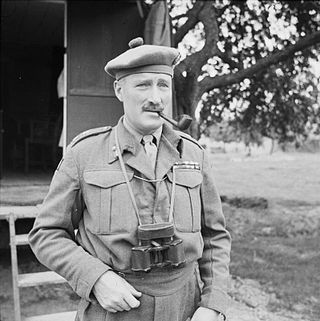
General Sir Neil Methuen Ritchie, was a British Army officer who served in the First and Second World Wars. During the Second World War he commanded the British Eighth Army in the North African campaign from November 1941 until he was dismissed in June 1942 after a disastrous defeat in the Battle of Gazala.

Leonard Townsend Gerow was a general in the United States Army who served with distinction in both World War I and World War II.

General Sir Rob McGregor MacDonald Lockhart was a senior British Army officer during the Second World War and later the first Commander-in-Chief of the Indian Army upon India's independence.

The 23rd Infantry Brigade was an infantry brigade of the British Army that saw active service in the First World War, mainly on the Western Front During the Second World War, the brigade saw active service in the Syria-Lebanon Campaign, the Western Desert Campaign, and the Burma Campaign.

The 1st Armoured Infantry Brigade was an infantry brigade of the British Army with a long history including service during both the First and the Second World Wars. It was based at Tidworth Camp. Previously, it has been designated 1st (Guards) Brigade, 1st Infantry Brigade, 1st Mechanised Brigade, and under the initial Army 2020 reforms assumed the title of 1st Armoured Infantry Brigade. Under the Future Soldier programme, the brigade merged with the 1st Artillery Brigade to form the 1st Deep Recce Strike Brigade Combat Team.
The 13th Infantry Brigade was a regular infantry brigade of the British Army that saw active service during both the First and the Second World Wars.
Lieutenant General Sir Francis Ivan Simms Tuker KCIE CB DSO OBE was a senior British Indian Army officer who commanded the 4th Indian Infantry Division during the Second World War from 1941.

The War Illustrated was a British war magazine published in London by William Berry. It was first released on 22 August 1914, eighteen days after the United Kingdom declared war on Germany, and regular issues continued throughout the First World War. The magazine was discontinued after the 8 February 1919 issue, but returned 16 September 1939 following the start of the Second World War. 255 issues were published throughout the Second World War before the magazine permanently ceased production on 11 April 1947.

The 29th Infantry Brigade was an infantry brigade unit of the British Army. It was originally raised in 1914 and saw service during the First and Second World Wars and the Korean War.
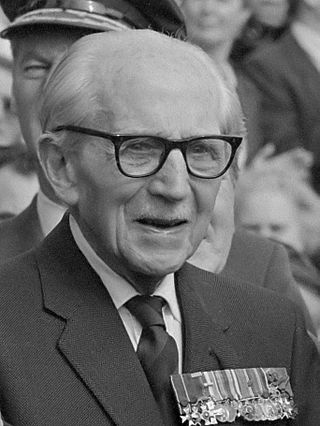
Major-General Sir Allan Henry Shafto Adair, 6th Baronet, was a senior officer of the British Army who served in both World wars; as a company commander in the Grenadier Guards in the First World War, and as General Officer Commanding of the Guards Armoured Division in the Second World War.
Brigadier Charles Joseph Weld was an officer in the British Indian Army during World War I, the interwar years and World War II.

Lieutenant General Harold Roe "Pink" Bull was a general in the United States Army and served as Assistant Chief of Staff (G-3) at Supreme Headquarters Allied Expeditionary Force (SHAEF) from 1943 to 1945.

Donald Wilson was a United States Army Air Forces general during World War II.

The I Marine Amphibious Corps, or I MAC, was a formation of the United States Marine Corps. It was created on 1 October 1942, with most of the staff transferred from Amphibious Corps, Pacific Fleet (ACPF). It was then deployed to the South Pacific Area – a U.S.-led multinational military command active during World War II that was a part of the U.S. Pacific Ocean Areas – first to Hawaii, then to New Caledonia.
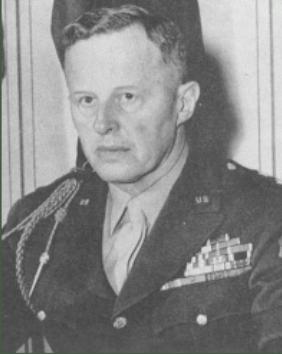
Lieutenant General John William Leonard was a senior United States Army officer who served during World War I, World War II and Cold War.

Major General Vyvyan Evelegh, was a senior officer of the British Army during the Second World War, commanding the 78th Infantry Division and the 6th Armoured Division in Tunisia and Italy.
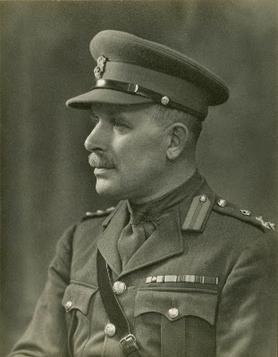
Major General George William Symes, was a senior British Army officer who served in the First World War, in which he was twice awarded the Military Cross. During the Second World War he commanded the 70th Infantry Division in India, and was deputy commander of the Special Force, commonly known as the Chindits, in Burma. He was deputy commander of the lines of communication of the 21st Army Group from May to November 1944, and then commanded the lines of communication in South East Asia Command (SEAC). In June 1945, he became general officer commanding (GOC) in Southern Burma.
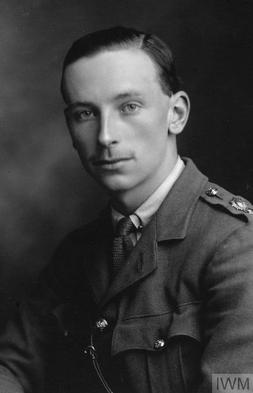
Major-General Sir Miles William Arthur Peel Graham, was a general officer in the British Army. During the Second World War he was the chief administrative officer of the Eighth Army in the North African Campaign and the Italian Campaign, and of the 21st Army Group in the North-West Europe Campaign of 1944–45.
References
- ↑ Martin, Orville W. Jr. (May–June 1971). "Lieutenant General Frederic Joseph Brown, Jr. 1905–1971". Armor. Washington, DC: United States Armor Association. p. 47 – via Google Books.